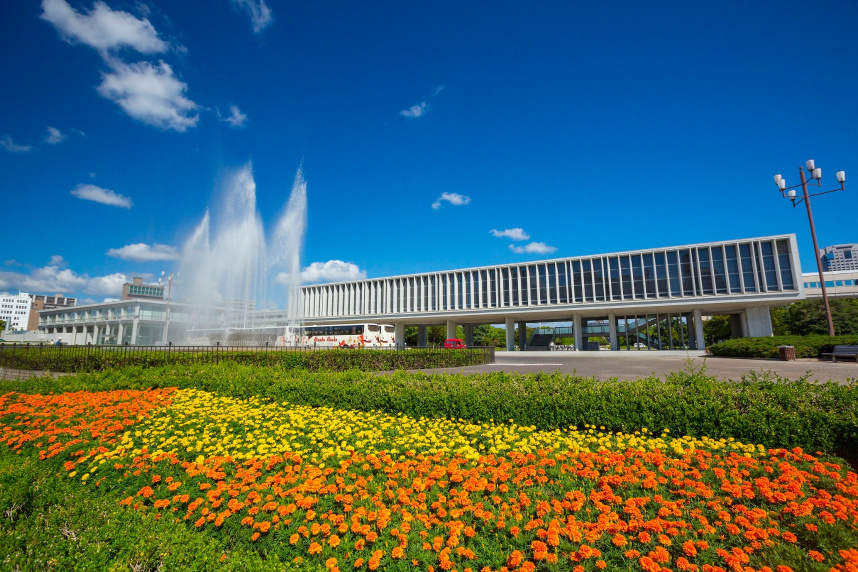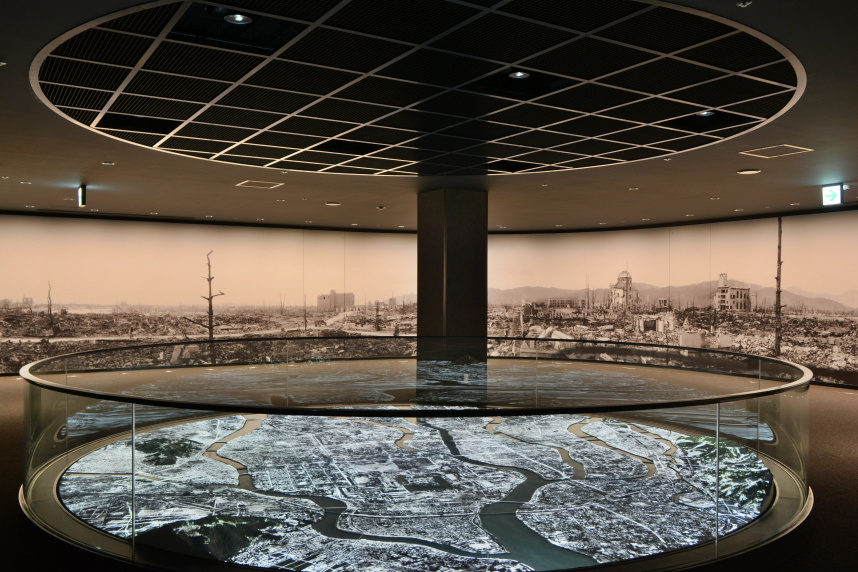 Commentary from Japan Tourism Agency
Commentary from Japan Tourism AgencyHiroshima Peace Memorial Museum
Table of Contents

The Hiroshima Peace Memorial Museum is the largest of the city’s venues related to the atomic bomb. It presents a thorough and emotional account of the tragic event of August 6, 1945, and its lingering aftereffects. One of several memorials in the city designed by renowned architect Tange Kenzo (1913–2005), the Peace Memorial Museum first opened in 1955, and in 2006 was designated an Important Cultural Property of Japan—the first time that postwar architecture had received this honor.
The museum comprises two expansive, adjacent structures within Peace Memorial Park. The main building is recommended for first-time visitors; it is here that countless artifacts from the time of the bombing are displayed, making the experience lived by Hiroshima’s A-bomb victims as tangible as possible for people today. The east building, meanwhile, is focused on peace education through a variety of media. In spring 2019, the main hall reopened after an extensive renovation, and many of its exhibits are now displayed even more effectively.
Inside the main building, a “peace clock” in the lobby displays the number of days that have elapsed since Hiroshima fell victim to the world’s first act of nuclear warfare, together with the number of days since nuclear weapons were last tested somewhere on Earth.
Entering the museum proper, visitors first pass through a narrow, dimly lit hallway lined with huge monochrome photographs whose subjects range in scale from a young girl in bandages to the bomb’s mushroom cloud as seen from high in the air. This newly added section is claustrophobic by design, conveying some of the sense of entrapment and desperation felt by victims.
Further on, spacious exhibition zones recount Hiroshima’s A-bomb experience chronologically and with a focus that moves from the material to the human: the bombing itself and subsequent firestorms and black rain, the confusing days and weeks when the nature of the new bomb was not yet understood on the ground, and decades of insidious, intergenerational damage wrought by radiation are related via photographs, illustrations created from memory by survivors, and dozens of artifacts. Among the latter are a heat-twisted tricycle that belonged to a young child, and a section of building taken from a bank roughly 240 meters from the hypocenter—the “shadow” of a victim, who was incinerated in an instant, burned into its stone steps by the intense heat.
A visit to the Peace Memorial Museum can be deeply harrowing, but is something that everyone should experience.
